What a magic morning, walk and then breakfast. It is beautiful.Up at 0630.
Off today to Breage, where Kel’s great grandfather and mother are buried. He placed a cross and poppy on the grave.
From Breage to St Michael’s Mount, cuppa and caught up with the Dentons. Next stop was Minack Theatre, then off to Land’s End (much too touristy and costly to stay, even the car parking was atrocious), and following that we headed to Port Cornwall, which was pretty spectacular and only a pound for parking. If recommendations were needed then Port Cornwall wins hands down from Land’s End and in fact according to records Port Cornwall was the original Land’s End. Had lunch there and headed back home this time on the A30 so as we approached our digs, we went through a few very narrow lanes to get there. We got caught in a traffic accident scene, first accident we have seen in the entire time we have been here. Looked like a head on accident.
Was a great day all in all, finished with dinner at the New Inn in Tywarderth just down the road from our digs. The meals were huge and really good value, so much so we couldn’t finish them, in fact Ron bought his bangers home with him.
Breage
The present church building was dedicated to St Breaca on 26 December 1456 and took six years to build. It appears that a Norman. Burch was built on the site in the early 12th Century. Hat remains of the original interior are a series of Wall Paintings executed shortly after the completion of the church.
Dominating the north wall are the figures of St. Christopher, these figures show how colourful the mediaeval interior once was. Other mediaeval work is on the roofs of the side aisles and the north transept. Some small amounts of stained glass survived the Puritan onslaught in can be seen on the south wall of the
Godolphin Chapel and in the south transept. The tower is 67 feet high and has a chime of eight bells rung on a piano clavier. The original three bells were melted down in 1770 ad recast into one huge 26cwt bell. The preset chime was cast from the existing metal thanks to the Carter family from Philadelphia, USA. The tower clock was given in memory f the late W T Carter. In the north west corner is a milestone bearing the name of EmperorMarcus Cassinnus Postumus (260-280AD). This was found a few hundred yards from the church in 1924.
St. Michael’s Mount
St Michael's Mount (Cornish: Karrek Loos yn Koos, meaning "hoar rock in woodland") is a small tidal island in Mount's Bay, Cornwall, England, United Kingdom.
The island is a civil parish and is linked to the town of Marazion by a man-made causeway of granite setts, passable between mid-tide and low water. The population of this parish in 2011 was 35. It is managed by the National Trust, and the castle and chapel have been the home of the St Aubyn family since approximately 1650. The earliest buildings, on the summit, date to the 12th century.
Its Cornish language name—literally, "the grey rock in a wood"—may represent a folk memory of a time before Mount's Bay was flooded, indicating a description of the mount set in woodland. Remains of trees have been seen at low tides following storms on the beach at Perranuthnoe. Radiocarbon dating established the submerging of the hazel wood at about 1700 BC.
Historically, St Michael's Mount was a Cornish counterpart of Mont Saint-Michel in Normandy, France (with which it shares the same tidal island characteristics and the same conical shape, in spite of being much smaller, at 57 acres, than Mont St Michel which covers 247 acres), when it was given to the Benedictine religious order of Mont Saint-Michel by Edward the Confessor in the 11th century.
Minack Theatre
The Minack Theatre (Cornish: Gwaryjy Minack) is an open-air theatre, constructed above a gully with a rocky granite outcrop jutting into the sea (minack from Cornish meynek means a stony or rocky place). The theatre is at Porthcurno, 4 miles (6.4 km) from Land's End in Cornwall, England. The season runs each year from May to September, and by 2012 some 80,000 people a year see a show, and more than 100,000 pay an entrance fee to look around the site.
It has appeared in a listing of the world's most spectacular theatres.
The theatre was the brainchild of Rowena Cade, who moved to Cornwall after the First World War and built a house for herself and her mother on land at Minack Point for £100. Her sister was the feminist dystopian author Katharine Burdekin and her partner lived with them from the 1920s. In 1929, a local village group of players had staged Shakespeare's A Midsummer Night's Dream in a nearby meadow at Crean, repeating the production the next year. They decided that their next production would be The Tempest and Miss Cade offered the garden of her house as a suitable location, as it was beside the sea. Miss Cade and her gardener, Billy Rawlings, made a terrace and rough seating, hauling materials down from the house or up via the winding path from the beach below. In 1932, The Tempest was performed with the sea as a dramatic backdrop, to great success. Miss Cade resolved to improve the theatre, working over the course of the winter months each year throughout her life (with the help of Billy Rawlings and Charles Angove) so that others might perform each summer.
In 1944, the theatre was used as a location for the Gainsborough Studios film Love Story, starring Stewart Granger and Margaret Lockwood but inclement weather forced them to retreat to a studio mock-up. In 1955, the first dressing rooms were built. In the 1970s, the theatre was managed by Lawrence Shove. Since 1976 the theatre has been registered as a Charitable Trust and is now run by a local management team.
Rowena Cade died on 26 March 1983, at the age of 89.
Cape Cornwall
Cape Cornwall (Cornish: Kilgoodh Ust, meaning "goose back of St Just") is a small headland in West Cornwall, UK. It is four miles north of Land's End near the town of St Just. A cape is the point of land where two bodies of water meet. Until the first Ordnance Survey, 200 years ago, Cape Cornwall was believed to be the most westerly point in Cornwall.
Most of the headland is owned by the National Trust. National Coastwatch has a look-out on the seaward side. The only tourist infrastructure at present is a car park (owned by the National Trust) and nice public toilets, and a refreshments counter during the summer.
Heinz Monument (the 1864 chimney of the former Cape Cornwall Mine visible in the centre) commemorates the purchase of Cape Cornwall for the nation by H. J. Heinz Company. The ruins of St. Helens Oratory can be seen in the left, with the two offshore rocks called The Brisons in the distance.
Pottery found in cists on the Cape have been dated to the Late Bronze Age. The presence of another cliff castle nearby (Kenidjack) may indicate that the area was important in the Iron Age. On the landward side of the Cape is the remains of the medieval St Helen’s Oratory, which replaced a 6th-century church. A font now installed in the porch of St Just church may be from this building.

 Cape Cornwall, England, United Kingdom
Cape Cornwall, England, United Kingdom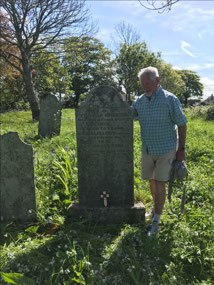
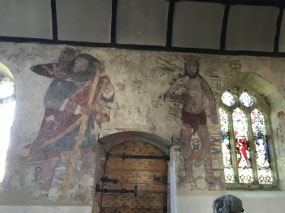
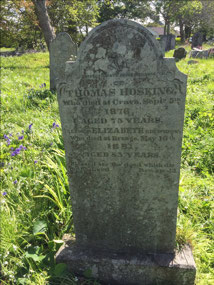





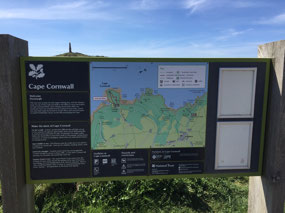
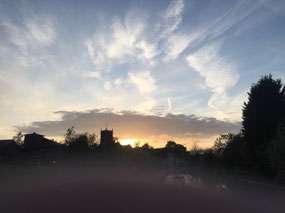
2025-05-22